Since Italy is such a wonderful place, we didn’t want to shortchange it by omitting it from the blog, despite the fact that we have been in India for the last couple weeks. And Italy is great. It has beautiful cities, nice people, and amazing food. It was a nice transition for us from the general orderliness of Central Europe to the chaos that is India (this is especially true for Naples). We are both very enthusiastic Itali-philes, boasting both close friendships with Italians, actual Italian genetics (somewhere on one of Marisa’s X chromosomes), and a love for the cuisine. We have both been here before and didn’t feel as compelled to explore it as much as thoroughly as other places. We could have spent a couple weeks learning the history, absorbing the culture, and eating the food but we had a plane to catch to Delhi and our time was limited. We visited three cities in all: Venice, Naples, and a quick day in Rome. Here’s a highlight reel of each city.
Venice
Venice is a city of tiny alleys, narrow streets, and streams of tourists. In fact, the crowds are so thick and the city’s landscape is so authentic and picturesque that it feels a bit like Disney’s Venice Village (if such a thing existed). Sharing the tiny passageways with so many hundreds of other tourists got a little stressful. People like to stop in front of you to do a little window shopping and most of the people walking around are just as lost as you are. You end up with no clear pedestrian pattern and have to keep your wits about you, lest you bowl over some nice little grandma or knock a kid into the canal. It’s like Times Square. Crowded, chaotic, and lots of slow, gawking tourists.
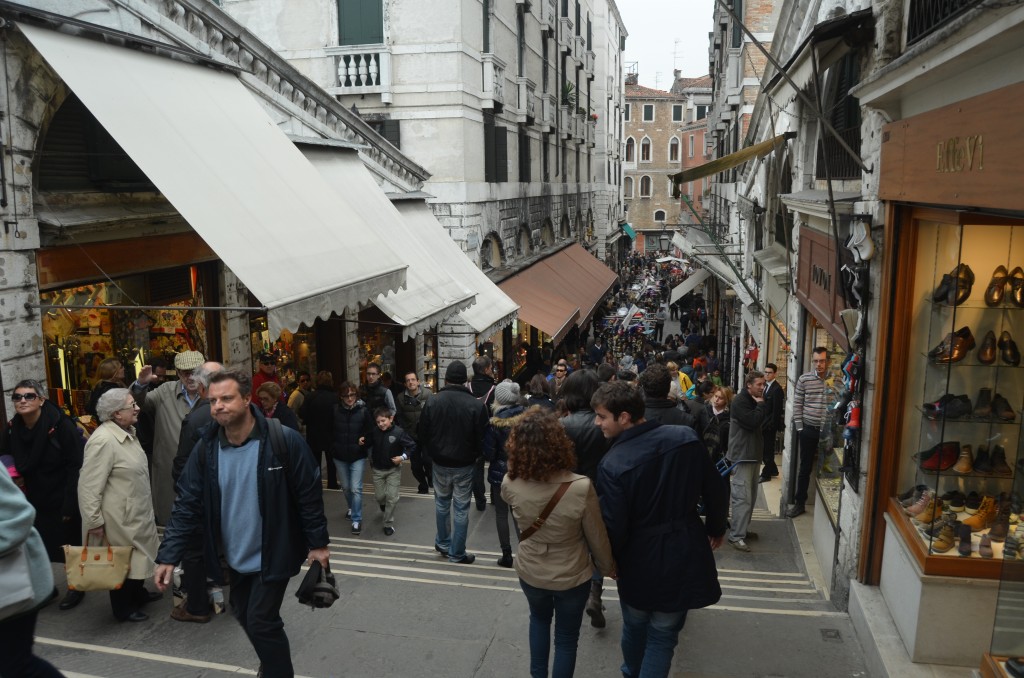
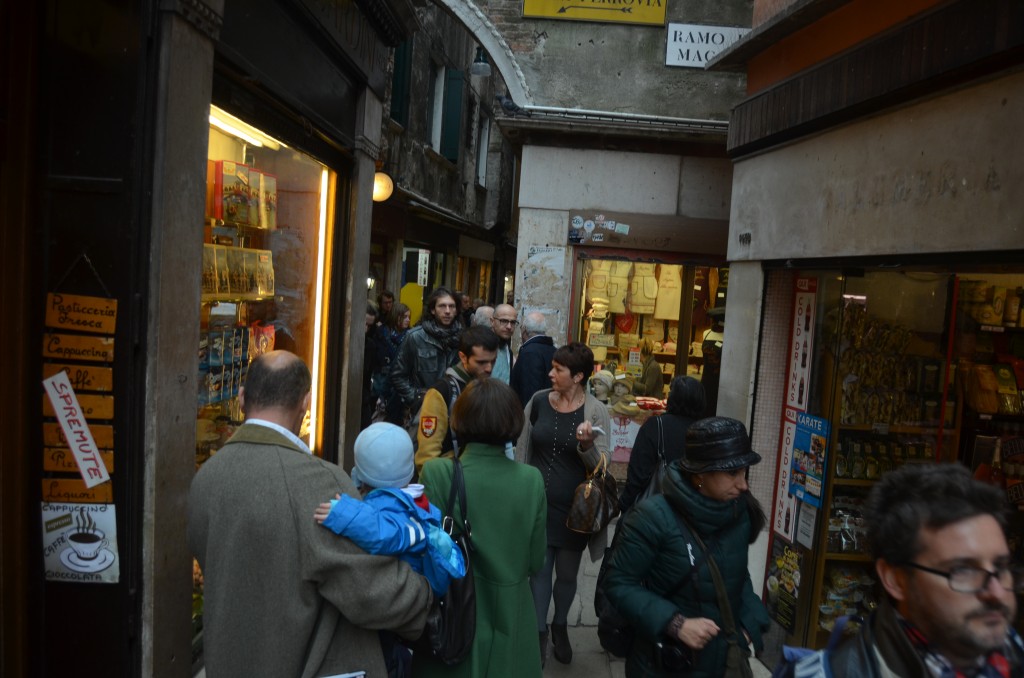
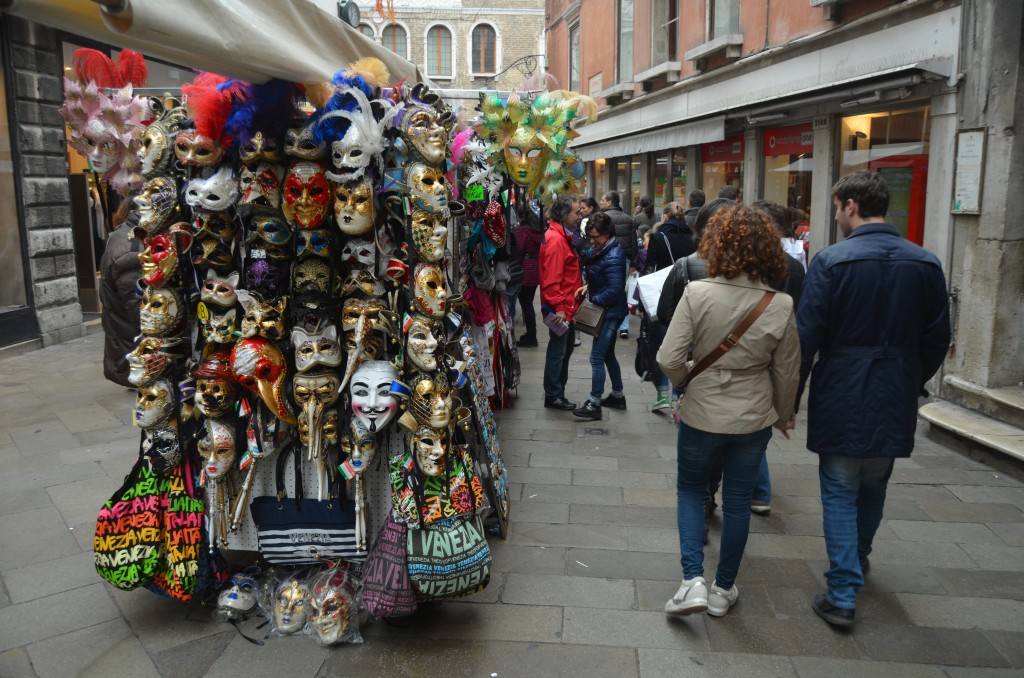
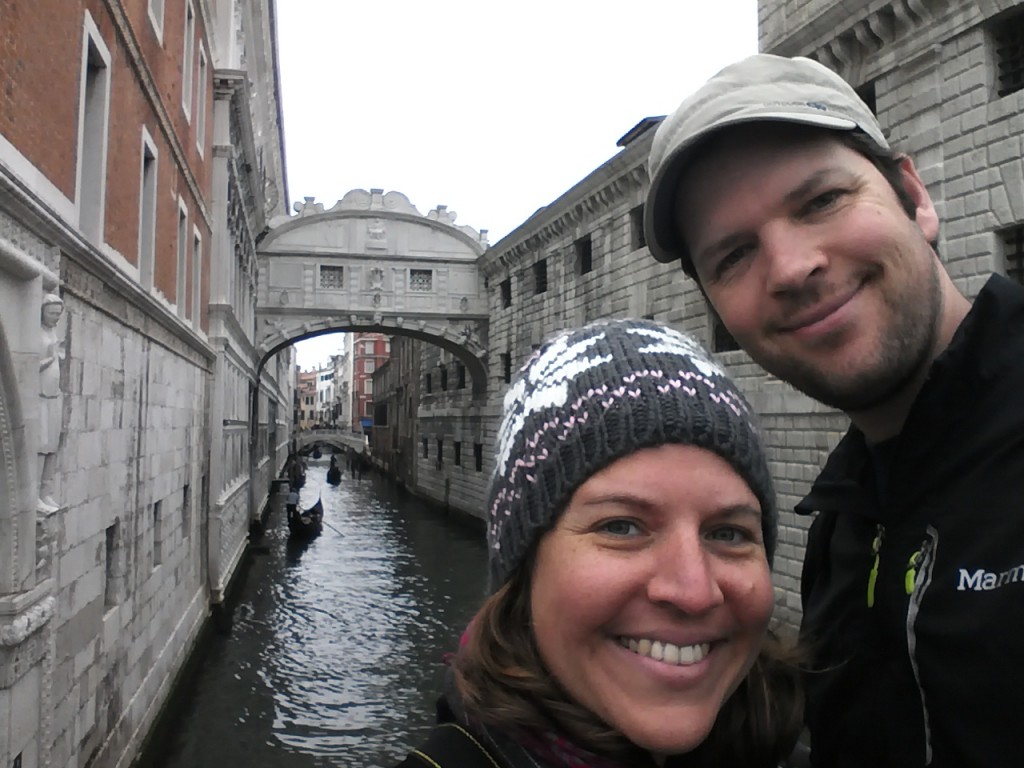
Despite the crowds, we had a really nice time wandering along the streets and over the canal bridges. With the decreasing amount of daylight that we’re dealing with these days, we ended up walking around the city a lot at night. This turned out to be a really nice way to do it. It is a lot less crowded and it has a really relaxing atmosphere. There is a lot of gentle lighting along the streets and the sound of the canal is very soothing. Being there at night gives you a much calmer experience.
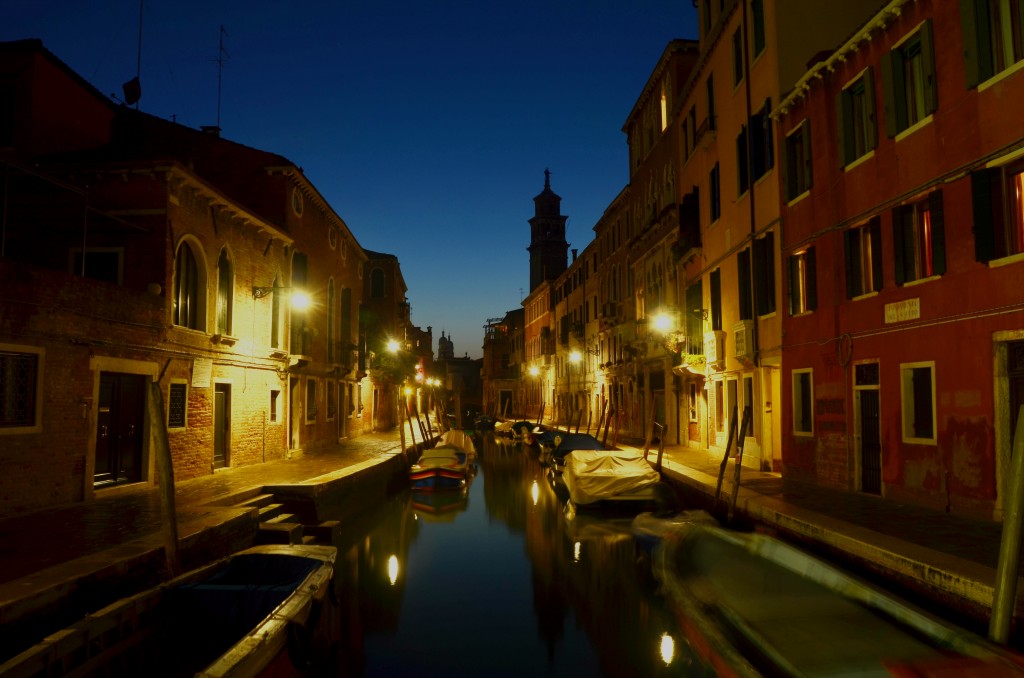
We spent part of one day on the island of Murano. It’s most famous for the glassblowing that is done there. There are a few masters of the art there and the main street is dominated by shops selling little souvenir pieces. We saw a quick demonstration at one of the local factories and I was really impressed at the skill. The guy made a 2 foot vase with a bubble at the end and a nice, stylized horse in less than ten minutes. I’m guessing he’s done it hundreds (thousands?) of times before, but it was still very impressive.
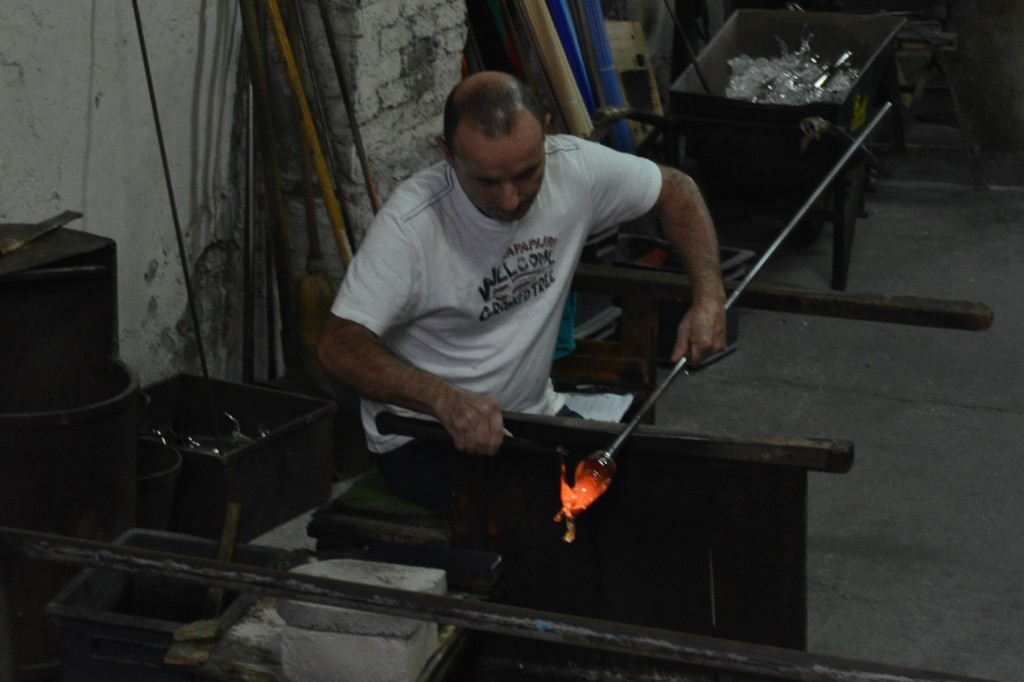
If I was going to give advice on visiting Venice, I would follow what our friends Vitor and Rui told us: just wander around. Try and stay away from the heavily trafficked routes between the various attractions. There is decent enough signage throughout that being lost doesn’t last for too long, and it’s almost impossible not to run across one of the main routes after wandering for a bit. I’m surprised someone hasn’t made a map for the city that marks out the busiest streets so crowd-phobic people like me can avoid them. Also, do the gondola ride. They’ll take you into the canals that have no walkways where it is actually quiet. It was the most peaceful we’ve felt on the trip yet.
Naples (Pompeii and Amalfi)
Naples gave me kind of a double-take. I didn’t know anything about the city but thought it would be generally similar to the other European cities we’d been in. You have to remember, Venice doesn’t really count as an Italian city. We didn’t leave the train station in Milan and hadn’t been to Rome in about a decade, so our minds were still firmly planted in Switzerland. We stepped out of the train station into a construction site with scooters flying through it, scruffy sidewalks populated by shady-looking characters (one of which eventually tried to pick-pocket my bag), and did I mention scooters? It was nothing like what I was expecting.
After parsing and re-parsing the directions from our airbnb host (apparently left and right get switched when you translate them from Italian), we found our bus, bought our tickets, and then perched on the edges of our seats, eyes wide in search of our stop. We exited accurately and started off to find our place for the next few days. Our place, it turns out, was located on the top of a building in the Spanish Quarter. This particular neighborhood is a warren of narrow and steep streets, tall buildings, churches, markets, and the ubiquitous speeding scooters. It was a real treat to stay in such a unique place.
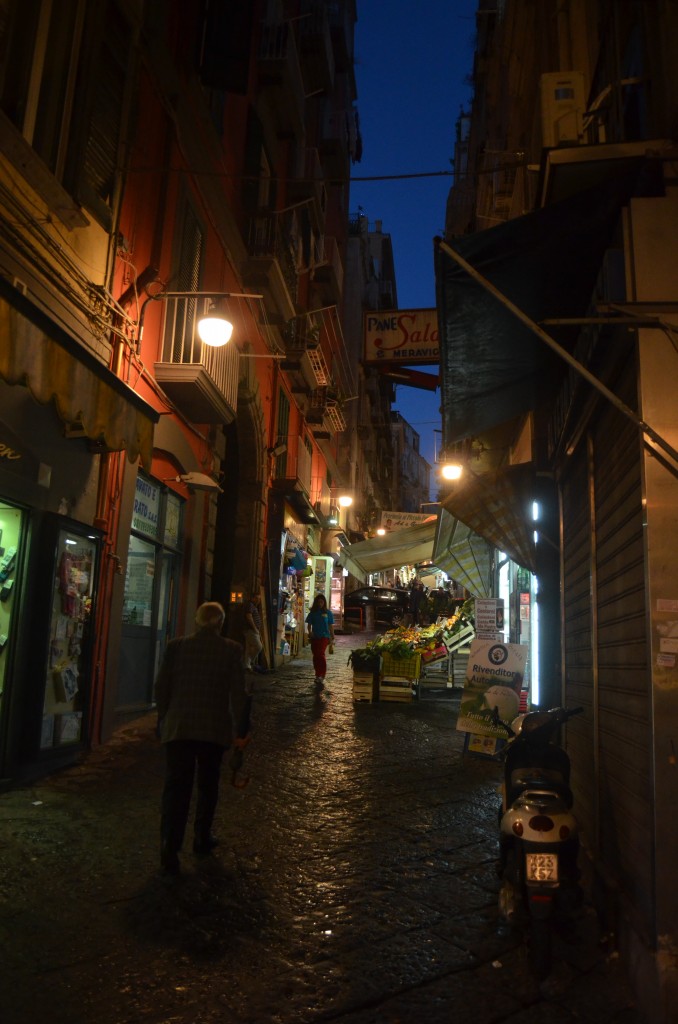
Naples is perhaps most famous for being the birthplace of pizza. If you know me at all, you know I love me some pizza (Marisa’s taste is a little more refined though she gets excited about the good stuff). There is a place in Naples called Da Michele, a legend recently made even more famous by being featured in Eat, Pray, Love. We were directed there by our friends and fellow pizza enthusiasts Maria and Giovanni. After having experienced the Neapolitan style of pizza at Pupatella’s in Arlington, we were excited to experience a truly authentic Neapolitan pizza. We hoofed from our apartment over to Da Michele’s location off of Corso Umberto and took a number from the host to claim our place in line. After a few minutes we were seated with a couple other tourists, one from Colorado and another from Australia, and ordered our margherita pizzas. The verdict? Well, I hate to besmirch the legend of Naples, but Pupatella is still at the top of our ‘best pizza in the world’ list. It was good (very good, even) but it wasn’t quite good enough to take the top spot. I guess we’ll just have to go back and try it again someday…
When we weren’t trying pizza, we were spending most of our time outside of the city. We took two day trips, one to Pompeii/Herculaneum and one down the Amalfi Coast. In case you haven’t heard of it (we certainly hadn’t), Herculaneum is another town to the northwest of Pompeii that was covered in ash during the same eruption. It is a much smaller site and was hit by the eruption in slightly different way, which resulted in some of it being better preserved. It is not as well known and has a lot less tourists wandering around.
Pompeii is a place that I remember learning about when I was a little kid. I never once thought I would actually get a chance to visit it. The morbid part of me expected to see bodies everywhere since that tends to be the focus on the textbooks in elementary school. We saw some of those but you really had to search them out. What is pushed front and center to visitors are the homes and what has been preserved inside of them. Seeing the colors of the frescoes that survived was incredibly cool. It can be hard to really visualize what places like Pompeii looked like back in the day (79 AD to be specific). Their homes were extremely colorful with ornate designs. We were both struck at how familiar they were and realized that they used the frescoes painted on the walls and along the ceilings the same way ‘modern’ (post-17th century) households hang paintings and install moulding. It was cool to see such a clear precursor to modern life in a place like Pompeii. I took a ton of pictures but I’m just posting some that best convey the general feeling of the site.
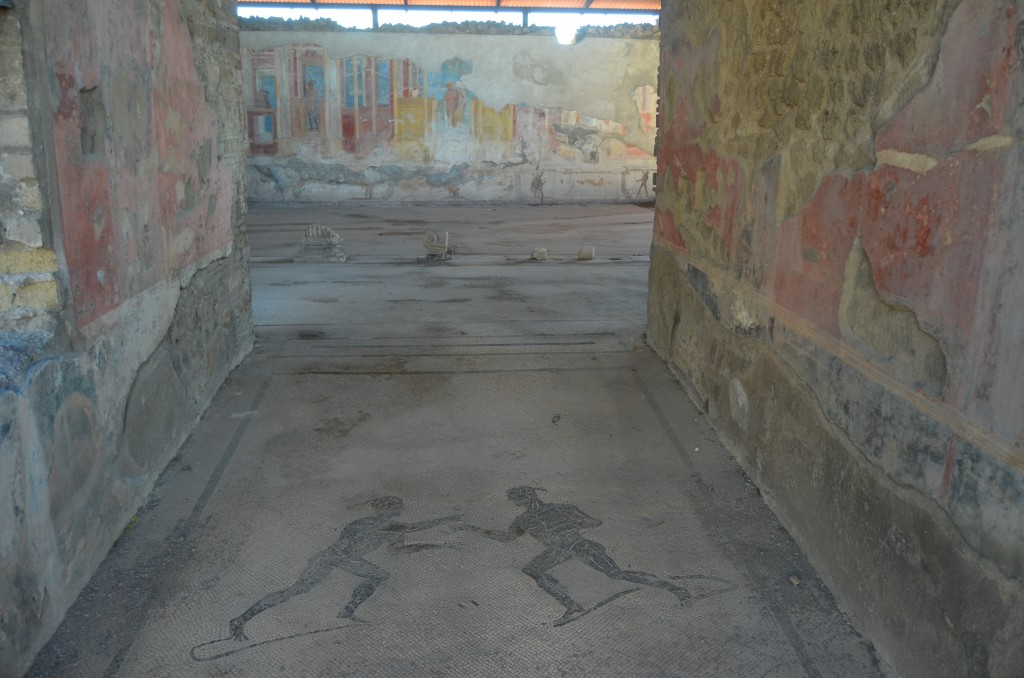
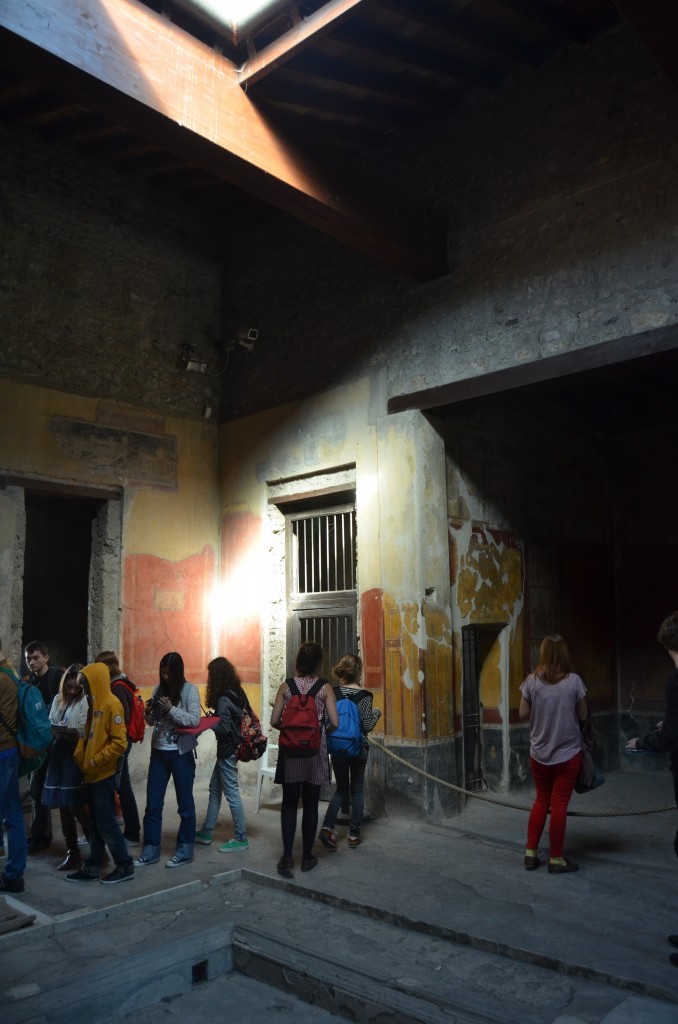
- Inside a well-preserved and wealthy home.
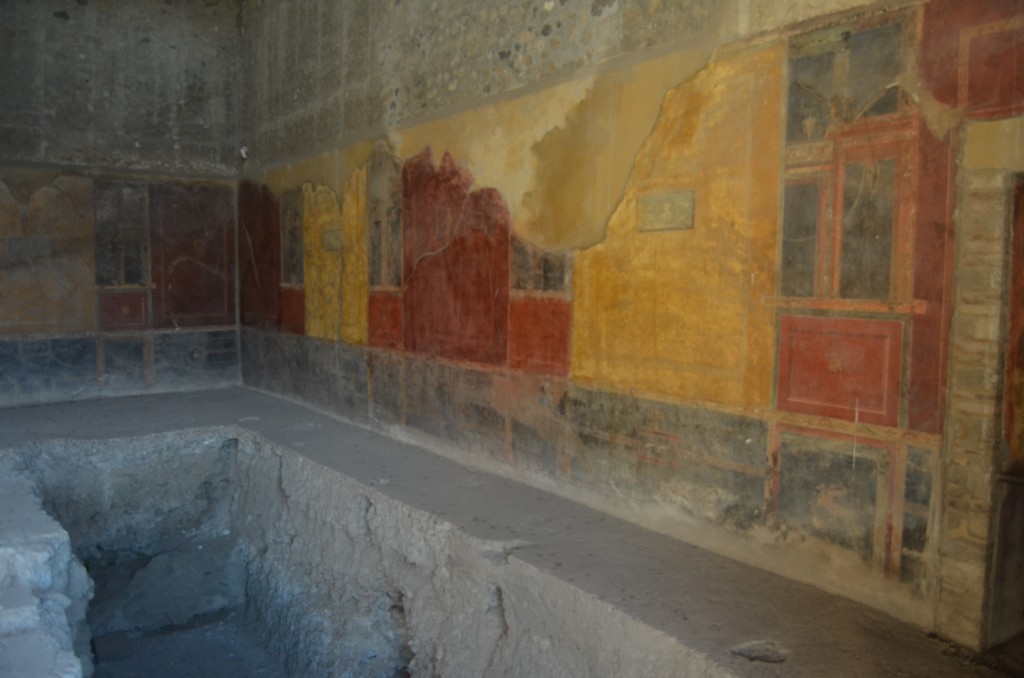
Typical colors. They were incredibly vibrant and you can see here how they painted things like windows and portraits onto their walls for decoration. 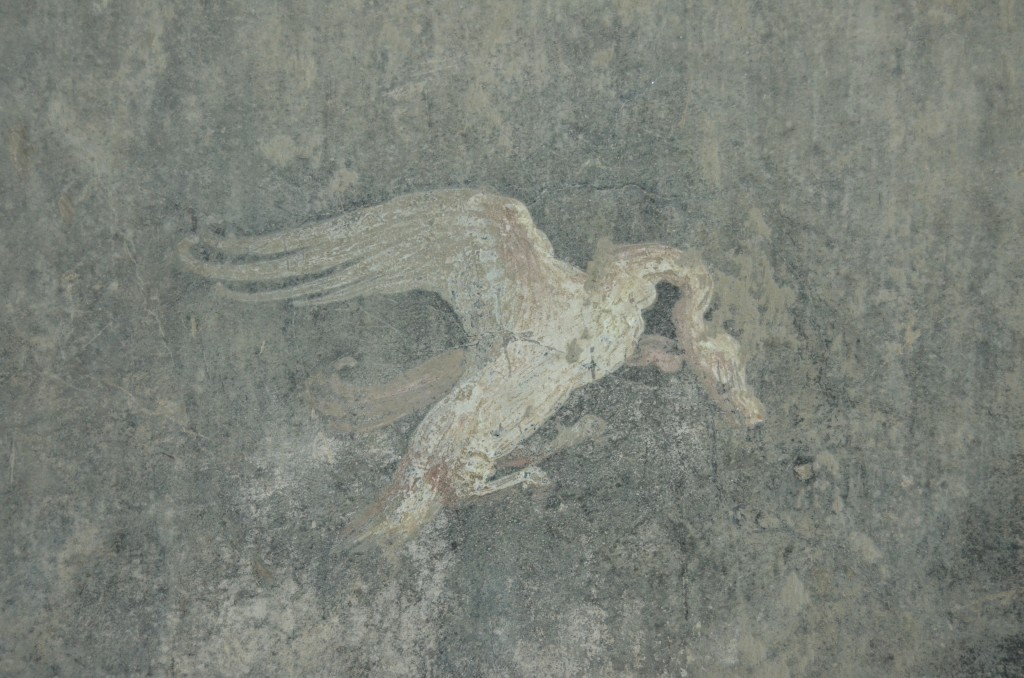
Detailed painting on wall in a home. 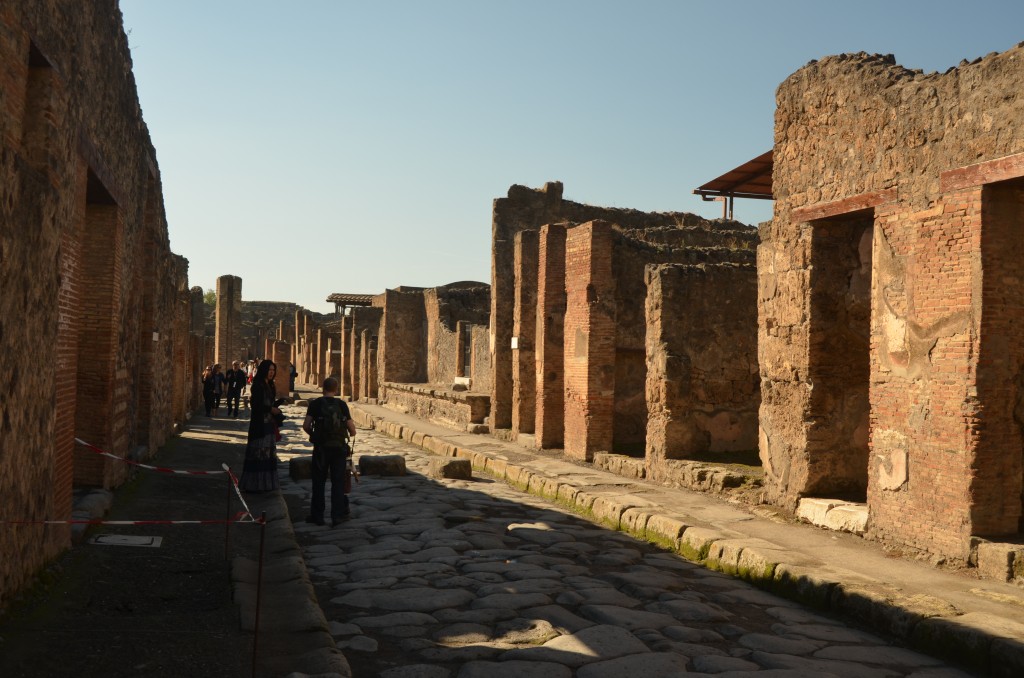
Typical street in Pompeii. 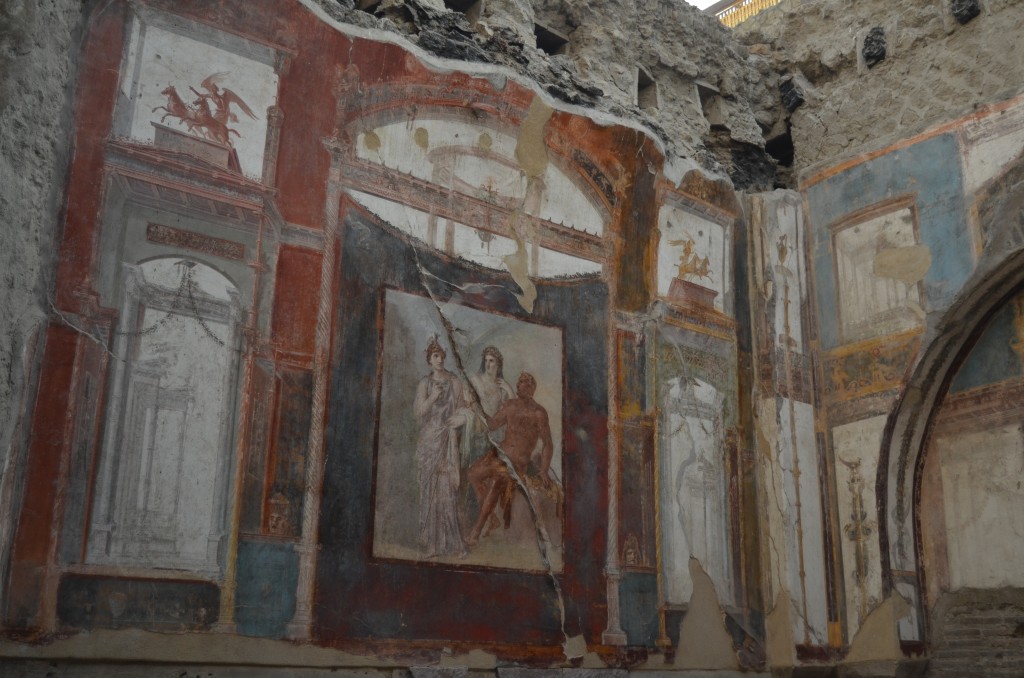
In the temple dedicated to Hercules, the legendary founder of Herculaneum. 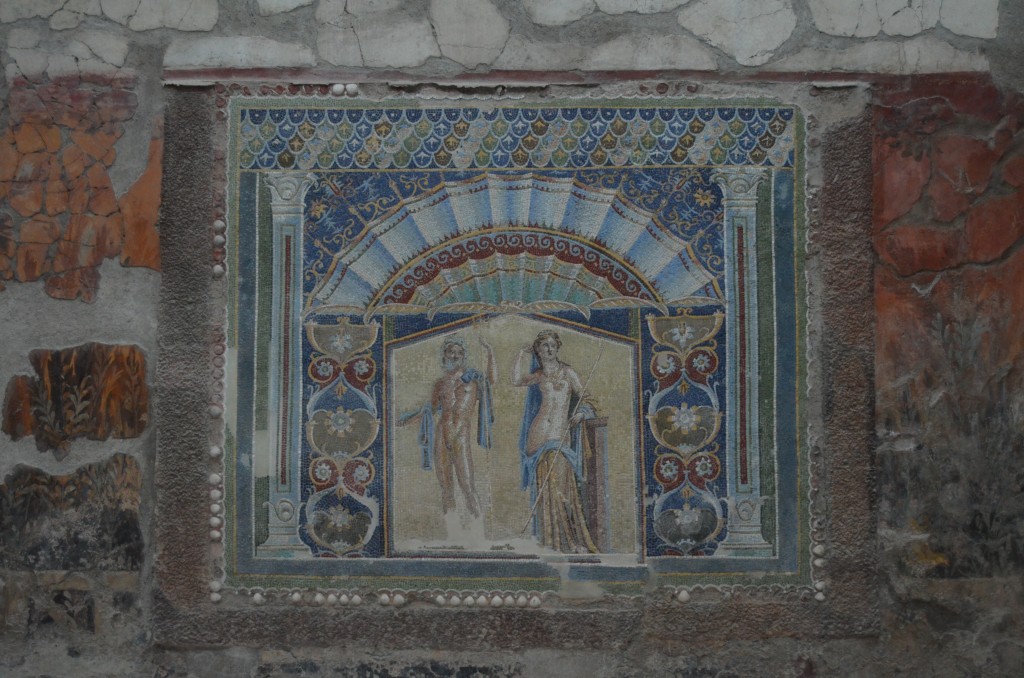
A mosaic dedicated to the water gods in Herculaneum. Really impressive, and more or less pristine. Click on the picture to see the original image if you want to get an idea of the quality.
The day after we visited the two archaeological sites, we headed down south to see the Amalfi Coast. We took the local train to Sorrento and then caught the bus from there that goes along the coast. This was generally agreed to be the best way to do it, since driving the route yourself (unless you’re Italian and a local) could be considered to be a form of suicide. The roads are narrow, the buses are wide, and the drivers are unforgiving. We stopped off in Positano and Amalfi before catching a train back home in the evening from Salerno (trust me, it all makes sense on the map).
The Amalfi coastline is beautiful, though it is definitely comparable to the Central Coast in California, or the Oregon coast. What is really extraordinary about it are the towns that are clinging to the cliffs above the water. While they are generally overrun with tourists (even more so in the summer), they have a nice charm that I think would be hard to find anywhere else. I managed to not get sick on the bus and we enjoyed the ride almost as much as our time in the towns themselves.
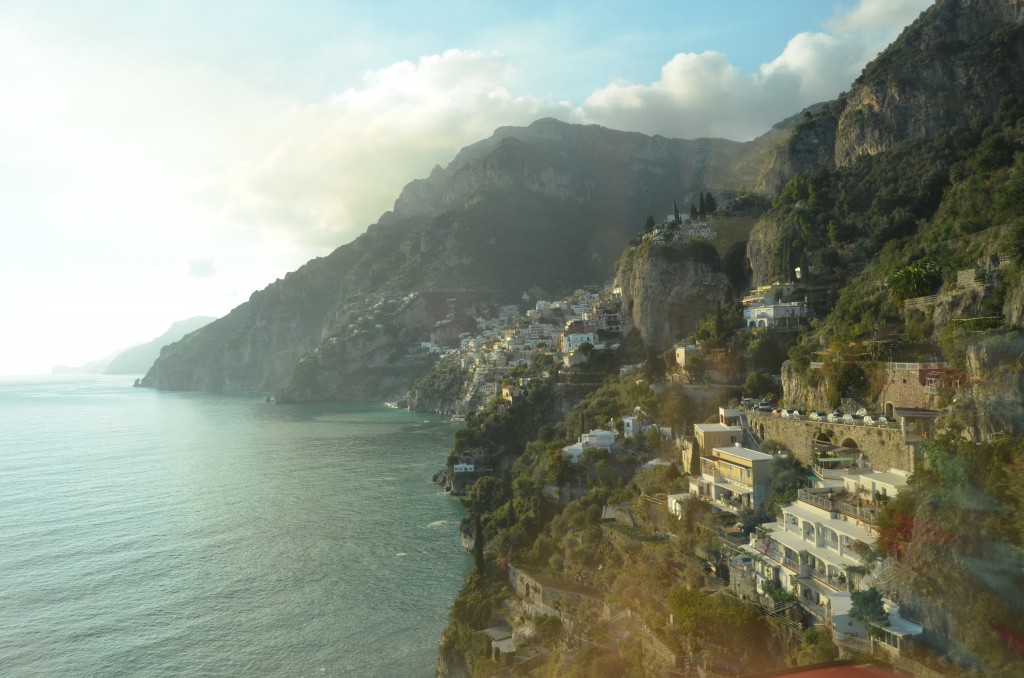
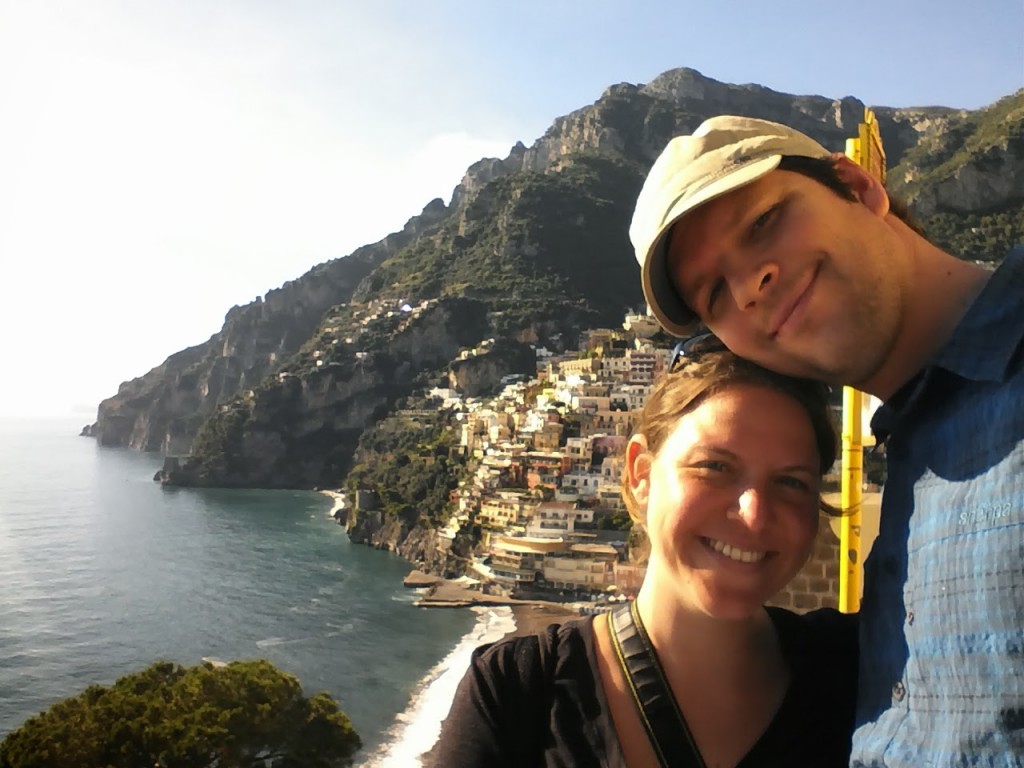
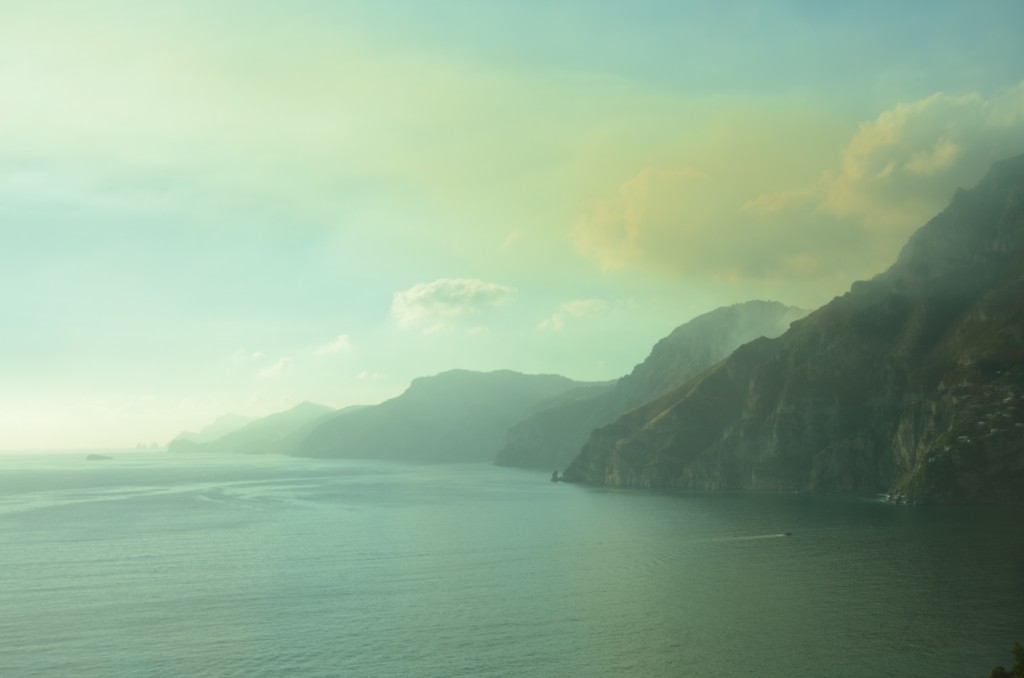 Sorry for the crap picture. We drove past a grass fire along the road, hence the smoke in the sky. Regardless, this picture gives you a good sense of what the coastline looks like from the road. All of our other pics have weird reflections from the bus window =P
Sorry for the crap picture. We drove past a grass fire along the road, hence the smoke in the sky. Regardless, this picture gives you a good sense of what the coastline looks like from the road. All of our other pics have weird reflections from the bus window =P
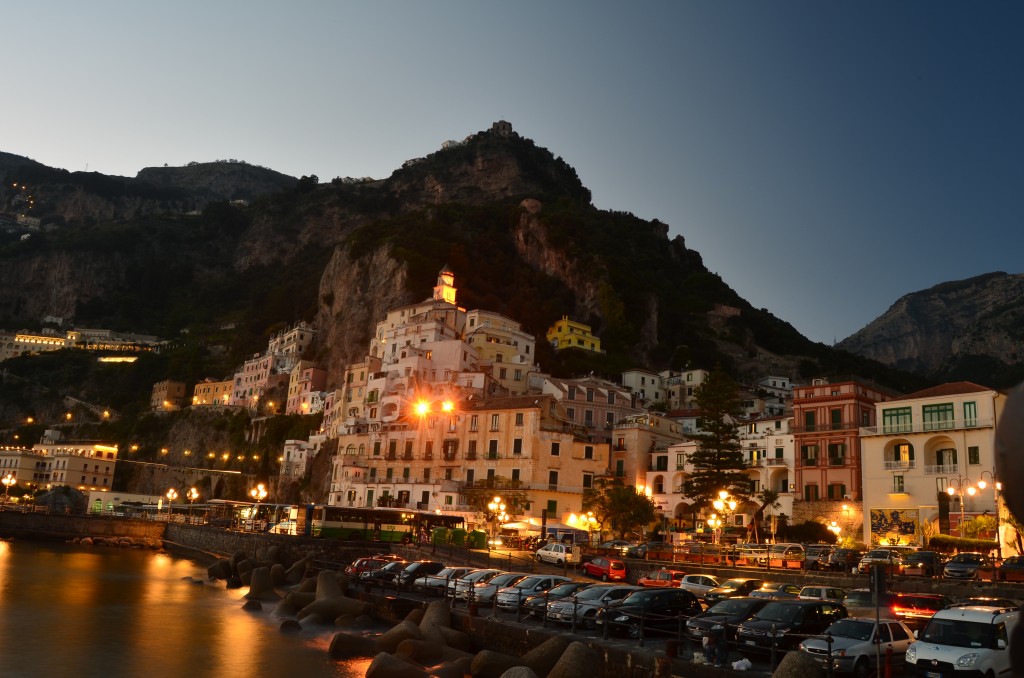
Rome
We spent a day wandering around Rome, revisiting a few of the places that we had already been to in the past. I went there ten years ago while I was wandering around Europe in a post-college daze. Marisa had been to Italy even before that on a visit with her grandma’s family in the small town of Gioia Sannitica. We were both satisfied seeing the main sights like the Vatican, Piazza Navona, the Pantheon, and the Trevy Fountain.
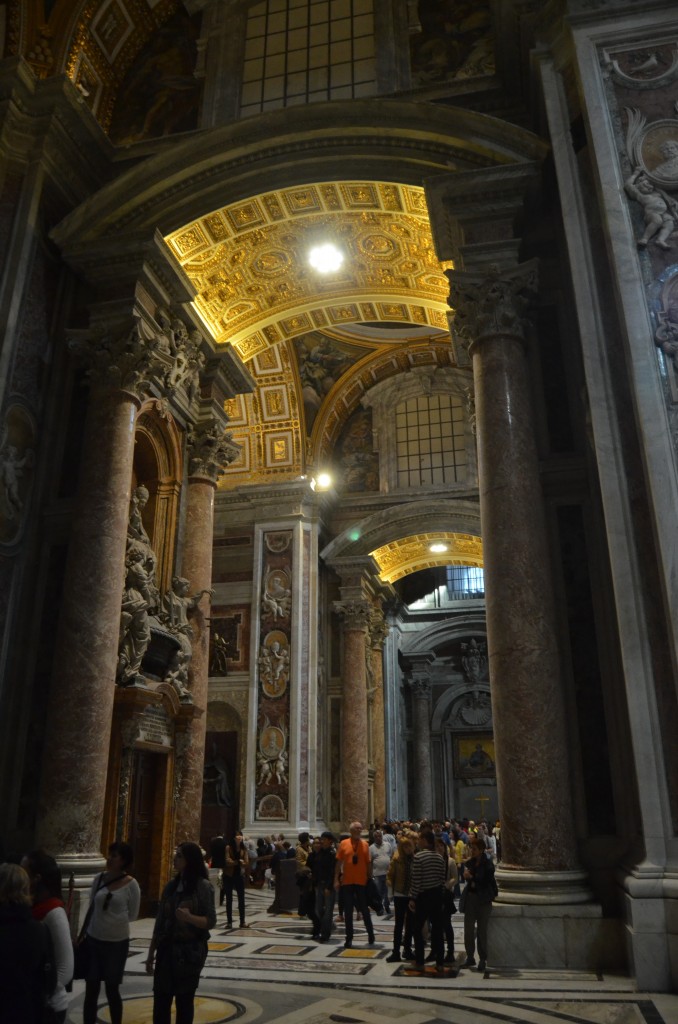
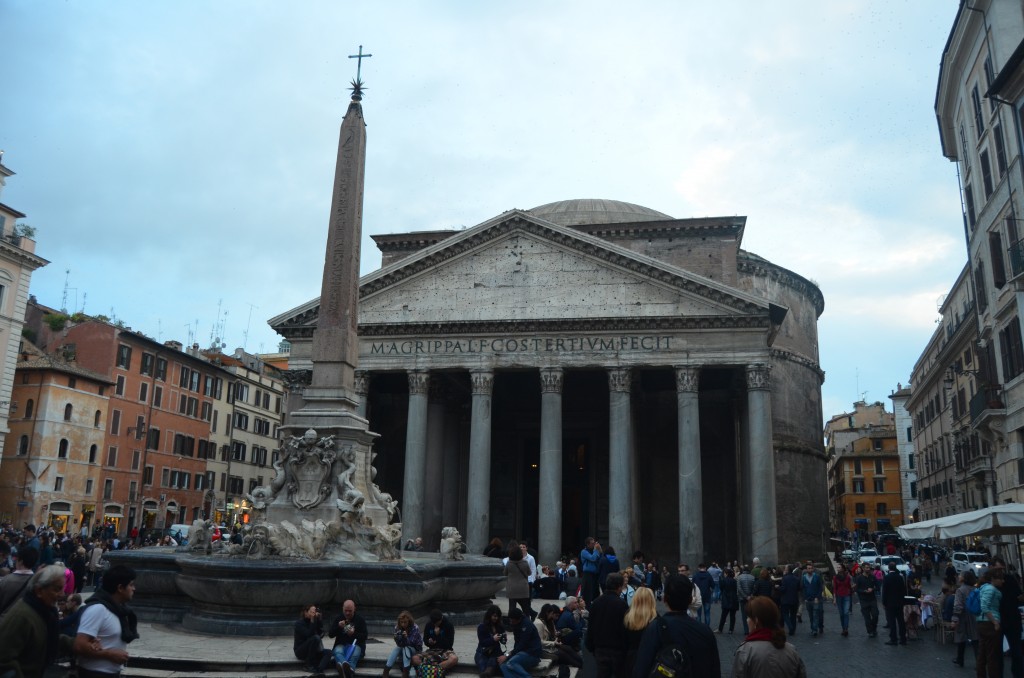

All of them were stuffed with tourists and people hawking crappy souvenirs and even crappier toys. This was probably true the first time we were there but memory has a way of adding layers of luster to experiences like ‘my first time in Rome’. We ended up ditching the crowds pretty quickly and found some nice places to eat in the neighborhood around our bed & breakfast. After that, all that was left was to catch our flight out of Europe and make our way to Asia.
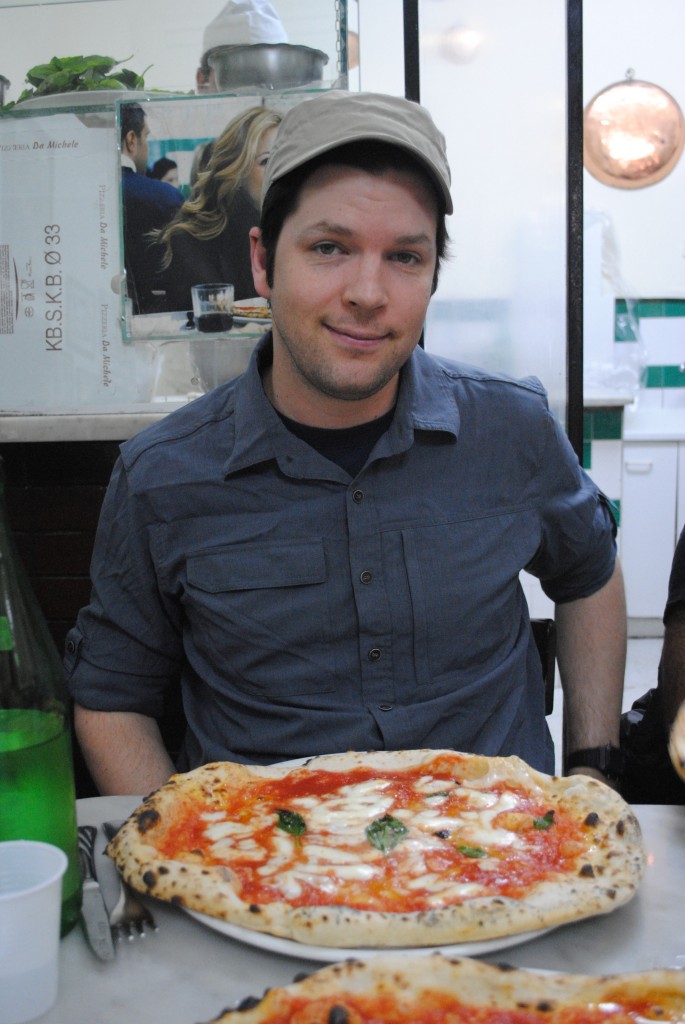
One response to “Italy, In Modo Rapido”
Terrific writing, Brian – so fun to read. And more fabulous pics. Especially liked seeing the Pompei area! And the Italian clan lives on. Marisa, your great-grandmother Anastacia Riccatelli-Landino from Gioa Sannitica would be proud 🙂